
Language Resources and Evaluation
Scope & Guideline
Exploring innovations in language technology.
Introduction
Aims and Scopes
- Linguistic Resource Development:
The journal emphasizes the creation and enhancement of diverse linguistic resources such as corpora, lexicons, and annotations that facilitate natural language processing (NLP) and computational linguistics. - Evaluation Methodologies:
It explores various methodologies for evaluating language technologies, including benchmarks and performance assessments in tasks like sentiment analysis, machine translation, and named entity recognition. - Cross-Linguistic Studies:
The journal encourages research that examines language resources across different languages, focusing on comparative studies, cross-linguistic annotations, and multilingual resource development. - Emerging Technologies in NLP:
It highlights the integration of advanced technologies such as machine learning, deep learning, and artificial intelligence in the creation and evaluation of linguistic resources. - Interdisciplinary Approaches:
The journal supports interdisciplinary research that combines insights from linguistics, cognitive science, and computer science to enhance the understanding and processing of human language.
Trending and Emerging
- Sentiment Analysis and Emotion Detection:
Recent publications increasingly focus on sentiment analysis, particularly in diverse and low-resource languages, reflecting a growing interest in understanding emotional nuances in textual data. - Multimodal and Multilingual Resources:
There is a rising trend towards developing resources that integrate multiple modalities (text, audio, visual) and cater to multilingual contexts, enhancing the applicability of language technologies. - Low-Resource Language Processing:
Research addressing the challenges of processing low-resource languages is gaining prominence, highlighting the need for inclusive technology that accommodates linguistic diversity. - Interoperability and Resource Sharing:
Emerging themes include interoperability between different language resources and platforms, promoting collaboration and resource sharing among researchers and institutions. - Application of Advanced Machine Learning Techniques:
The incorporation of advanced machine learning techniques, particularly deep learning, in the evaluation and enhancement of language resources reflects a significant shift towards data-driven methodologies.
Declining or Waning
- Traditional Linguistic Analysis:
There has been a noticeable decrease in publications focusing solely on traditional linguistic analysis without integration into computational frameworks, as the field increasingly leans towards technology-driven approaches. - General Corpus Linguistics:
Research centered on general corpus linguistics, without specific applications or advancements in NLP technologies, has diminished, possibly due to the growing emphasis on applied language technologies. - Manual Annotation Techniques:
The reliance on manual annotation methods is declining as automated and semi-automated approaches are gaining traction, reflecting the shift towards efficiency and scalability in resource development. - Static Language Resources:
The focus on static language resources that do not incorporate dynamic or evolving elements is waning, as researchers seek more adaptable and context-sensitive resources. - General Surveys without Novel Contributions:
The publication of general surveys that do not provide novel insights or methodologies is decreasing, as the journal prioritizes original research contributions that advance the field.
Similar Journals
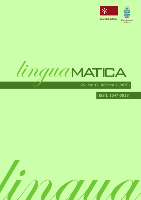
Linguamatica
Fostering Collaboration in Language Research Excellence.Linguamatica is a prominent open-access journal published by UNIV MINHO, INST EDUCACAO, CENTRO INVESTIGACAO EDUCACAO in Portugal, with the objective of advancing the field of linguistics and language studies. Since its establishment in 2009, the journal has served as a vital platform for disseminating high-quality research and innovative studies in linguistics, emphasizing both theoretical and applied perspectives. With an impressive Scopus ranking placing it in the 76th percentile in Arts and Humanities and the 73rd percentile in Social Sciences, Linguamatica is recognized for its significant contributions and rigorous peer-review process. The journal's commitment to open-access publishing ensures that research findings are accessible to a wider audience, fostering collaboration and knowledge sharing among researchers, professionals, and students. Located at CAMPUS GUALTAR, BRAGA 4710, PORTUGAL, Linguamatica aims to be a leading source of valuable insights in linguistics, covering a diverse array of topics from language acquisition to sociolinguistics, thereby playing a crucial role in shaping contemporary language research.

TRAITEMENT AUTOMATIQUE DES LANGUES
Connecting Minds Through Language TechnologyTRAITEMENT AUTOMATIQUE DES LANGUES is a prominent academic journal dedicated to the field of automatic language processing, published by the ASSOCIATION TRADUCTION AUTOMATIQUE LINGUISTIQUE APPLIQUEE in France. Established as a crucial resource for researchers and practitioners, the journal explores innovative approaches to linguistics and language applications, contributing significantly to the understanding and advancement of technology in language processing. Although it currently holds a Q4 ranking across categories such as Computer Science Applications and Linguistics in the 2023 Scopus metrics, the journal encourages submissions that push the boundaries of current methodologies, seeking to elevate the discourse within these disciplines. With no open access policies specified, the journal serves as an exclusive platform for scholarly communication through traditional access means. TRAITEMENT AUTOMATIQUE DES LANGUES aims to foster collaboration and stimulate advancements in the richly interlinked areas of language technology, computation, and linguistics, making it an invaluable resource for students, researchers, and professionals alike.

PROCESAMIENTO DEL LENGUAJE NATURAL
Advancing Insights in Natural Language ProcessingPROCESAMIENTO DEL LENGUAJE NATURAL, published by the SOCIEDAD ESPAÑOLA DE PROCESAMIENTO DEL LENGUAJE NATURAL (SEPLN), is a premier journal that serves as a vital resource in the interdisciplinary fields of Computer Science and Linguistics. With an impressive 2023 impact factor ranking it as Q2 in Computer Science Applications and Q1 in Linguistics and Language, this journal offers valuable insights into the latest advancements and research trends. Based in Spain, and associated with the University of Alicante, the journal provides a platform for the dissemination of high-quality research, contributing significantly to the understanding of natural language processing and its applications. Although it operates under a traditional subscription model, the accessibility and relevance of its content make it an essential read for researchers, professionals, and students keen on exploring the intersection of language and technology. The journal’s performance, reflected in its Scopus ranks that place it in the top percentiles across various categories, reaffirms its importance in academia and its commitment to fostering innovation and knowledge in the field.
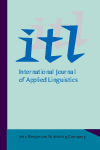
ITL-International Journal of Applied Linguistics
Pioneering insights for educators and linguists alike.ITL-International Journal of Applied Linguistics, published by JOHN BENJAMINS PUBLISHING CO in Belgium, stands as a leading journal in the field of applied linguistics and education, recognized for its rigorous scholarship and impactful contributions. With an impressive ranking of Q1 in both the Education and Linguistics and Language categories, ITL holds its place among the top journals globally, featuring in the Scopus rankings with a notable 91st percentile in both Arts and Humanities as well as Social Sciences. The journal aims to disseminate innovative research exploring the intersection of linguistics, language acquisition, and pedagogical practices, fostering a rich academic dialogue among researchers, educators, and practitioners. Though not currently an open access journal, ITL remains accessible to a broad readership, with an emphasis on high-quality, peer-reviewed articles that inform and inspire advancements in applied linguistics. The journal's commitment to academic excellence and relevance makes it an essential resource for those seeking to understand and contribute to the dynamic landscape of language studies.
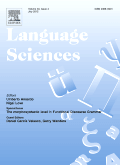
LANGUAGE SCIENCES
Unraveling the Complexities of CommunicationLANGUAGE SCIENCES, published by Elsevier Science Ltd, stands as a prominent journal in the field of linguistics and language studies. With an impressive impact factor that solidifies its reputation, it holds a Q1 ranking in both the linguistics and language categories for 2023, reflecting its excellence and relevance in cutting-edge research. Since its inception in 1979, this journal has evolved to encompass a wide range of interdisciplinary studies, providing a platform for innovative research that addresses the complexities of language use, acquisition, cognition, and social interactions. The journal is hosted in the United Kingdom and features rigorous peer-reviewed articles that contribute significantly to both the academic community and practical applications in language-related fields. With access options tailored for a diverse range of readers and contributors, LANGUAGE SCIENCES invites scholars, students, and professionals to engage with its comprehensive body of work and contribute to the ongoing discourse in linguistics.

Language and Education
Fostering Excellence in Language Studies and TeachingLanguage and Education is a leading academic journal published by Routledge Journals, Taylor & Francis Ltd, specializing in the intersection of language studies and educational practices. With an impressive Q1 ranking in both Education and Linguistics and Language categories for 2023, it stands out as a crucial resource for researchers, educators, and industry professionals. Covering a wide array of topics pertinent to language acquisition, pedagogical methodologies, and culturally responsive education, this journal supports rigorous scholarship in the field. While not currently offering open access options, its contributions are vital for advancing knowledge and fostering innovation across disciplines. The journal's long-term commitment to excellence is evidenced by its high rankings in Scopus, placing it in the 94th percentile in Language and Linguistics and the 80th percentile in Education. Since its inception in 1987, Language and Education has not only tracked the evolving landscape of language education but has also actively shaped it, making it an indispensable tool for anyone invested in educational research and practice.
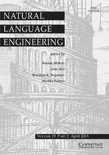
Natural Language Engineering
Unleashing the Power of Language through EngineeringNatural Language Engineering is a premier journal published by Cambridge University Press, dedicated to advancing the field of artificial intelligence and its intersection with linguistics and software. Since its inaugural publication in 1995, the journal has established itself as a vital platform for innovative research and development in natural language processing (NLP) and engineering. With a notable impact factor reflecting its influential contributions, it ranks in the top tiers across various categories, including Q1 in Linguistics and Language and Q3 in Artificial Intelligence. Researchers and practitioners alike benefit from the opportunity to access insightful articles that address both theoretical aspects and practical applications of NLP technologies. Although it operates under a traditional subscription model, the rigorous peer-review process ensures high-quality publications that foster academic discourse and collaboration within the community. This journal is essential for anyone interested in the evolving landscape of language engineering, making it a cornerstone reference for upcoming scholars and seasoned professionals aiming to push the boundaries of knowledge in this dynamic field.

Forma y Funcion
Pioneering open access research in linguistics.Forma y Funcion is a distinguished open access journal published by UNIV NACIONAL COLOMBIA, FAC CIENCIAS HUMANAS, dedicated to advancing the fields of linguistics and language studies. With an ISSN of 0120-338X and an E-ISSN of 2256-5469, the journal has been committed to open access since 2005, ensuring that research is freely accessible to scholars, professionals, and students around the globe. Situated in Bogotá, Colombia, it has established itself as a pivotal platform within the academic community, achieving a commendable Q2 ranking in 2023 in the subfield of Linguistics and Language. Its Scopus rankings further underscore its relevance, placing it in the 55th percentile among peers in the Arts and Humanities and the 51st percentile within Social Sciences. Covering a range of topics related to language and linguistics, Forma y Funcion aims to foster cutting-edge research and dialogue, making significant contributions to the field from 2019 through 2024 and beyond.
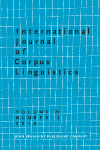
International Journal of Corpus Linguistics
Fostering Collaboration in Linguistic ResearchThe International Journal of Corpus Linguistics, published by John Benjamins Publishing Co, is a premier academic journal dedicated to advancing the field of corpus linguistics. With an ISSN of 1384-6655 and an E-ISSN of 1569-9811, this journal serves as a pivotal platform for researchers and practitioners alike to explore the intricate relationships between language and corpora. Housed in the Netherlands and operating within the prestigious Q1 category in Linguistics and Language, the journal boasts impressive Scopus rankings, positioning it in the top percentiles of both Arts and Humanities and Social Sciences. Its commitment to rigorous peer-reviewed scholarship not only enhances understanding in the domain but also fosters collaboration among scholars. With coverage spanning from 1996 to 2024, the journal publishes cutting-edge research that contributes valuable insights into linguistic patterns and empirical studies. Whether you're an established researcher or a student embarking on your academic journey, the International Journal of Corpus Linguistics is an essential resource for anyone seeking to deepen their understanding of language through corpora.

Transactions of the Association for Computational Linguistics
Connecting Minds Through Language InnovationTransactions of the Association for Computational Linguistics, published by MIT Press, serves as a premier open access journal dedicated to advancing the field of computational linguistics. Established as a key resource since 2013, this journal enhances the dissemination of research, offering unlimited access to groundbreaking studies. It holds an impressive array of category quartiles in 2023, ranking in the Q1 quartile across multiple disciplines including Artificial Intelligence, Communication, Computer Science Applications, Human-Computer Interaction, and Linguistics and Language. Further emphasizing its remarkable impact, the journal ranks #1 in both Linguistics and Communication, placing it at the forefront of social sciences. These factors contribute to an overall Scopus percentile ranking that epitomizes the journal's relevance and superiority within its domain. As researchers, professionals, and students seek to explore and contribute to the rapidly evolving landscape of language technology, this journal stands as an indispensable platform for sharing innovative ideas and studies within the community.